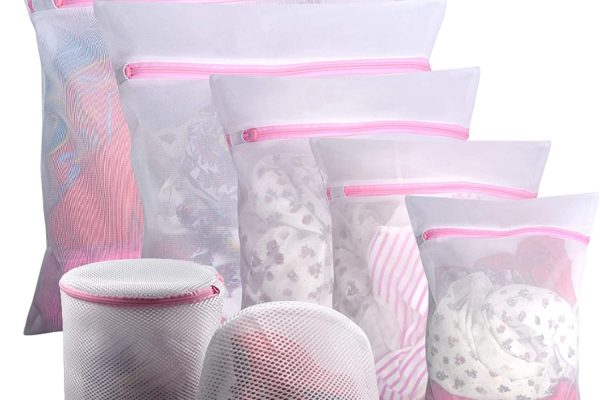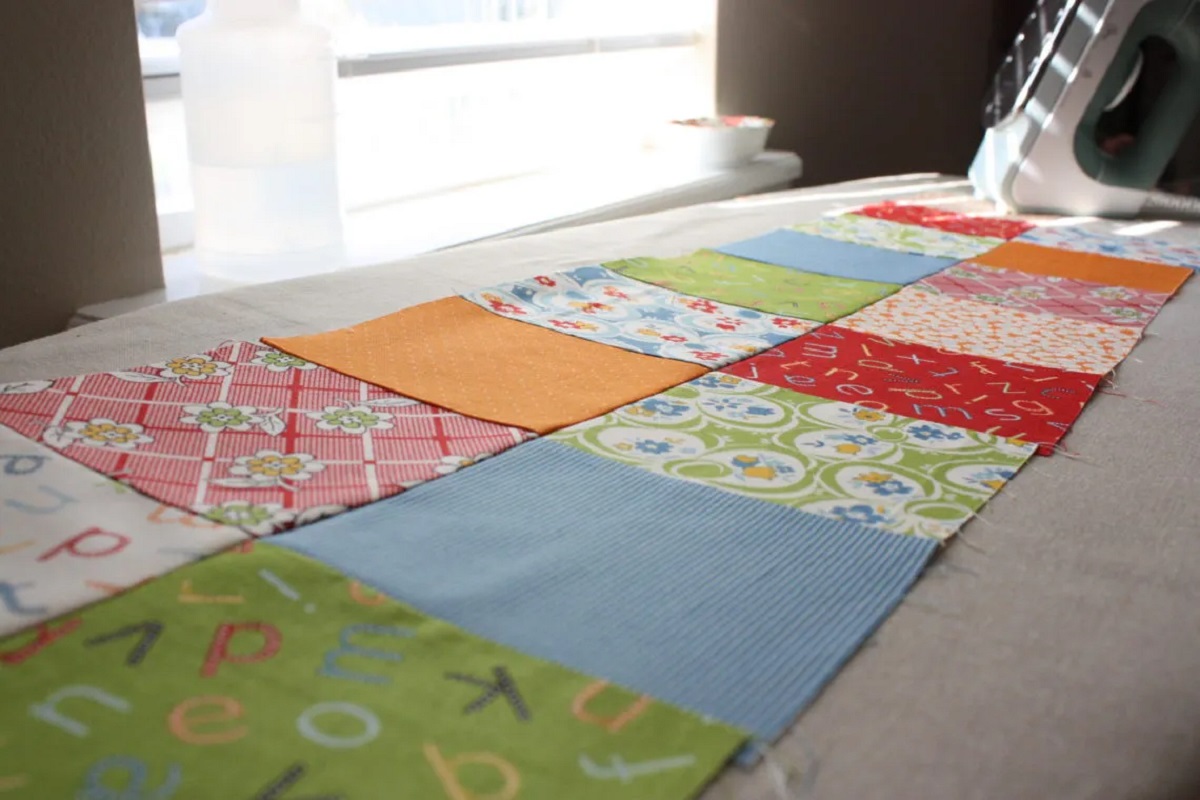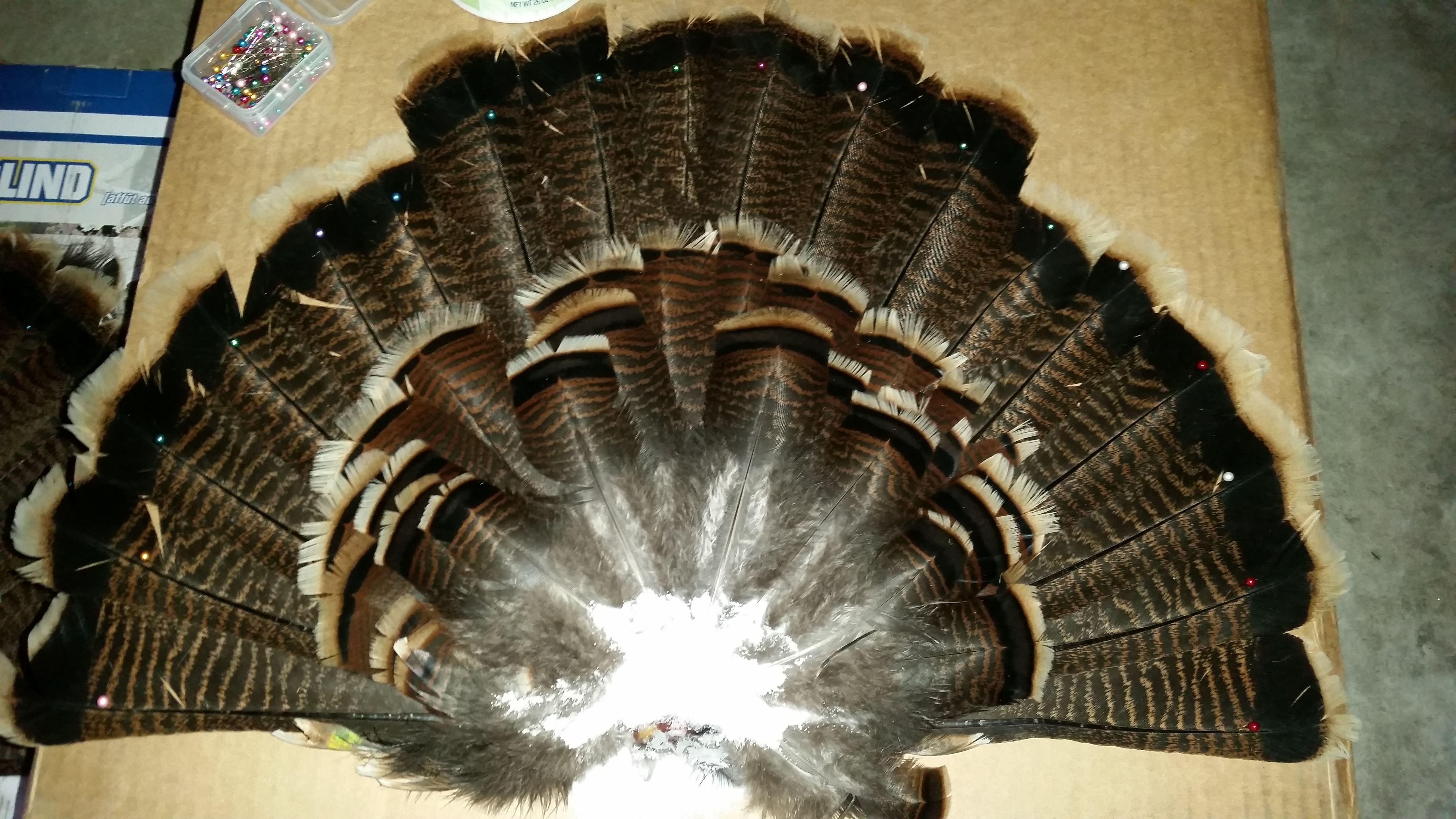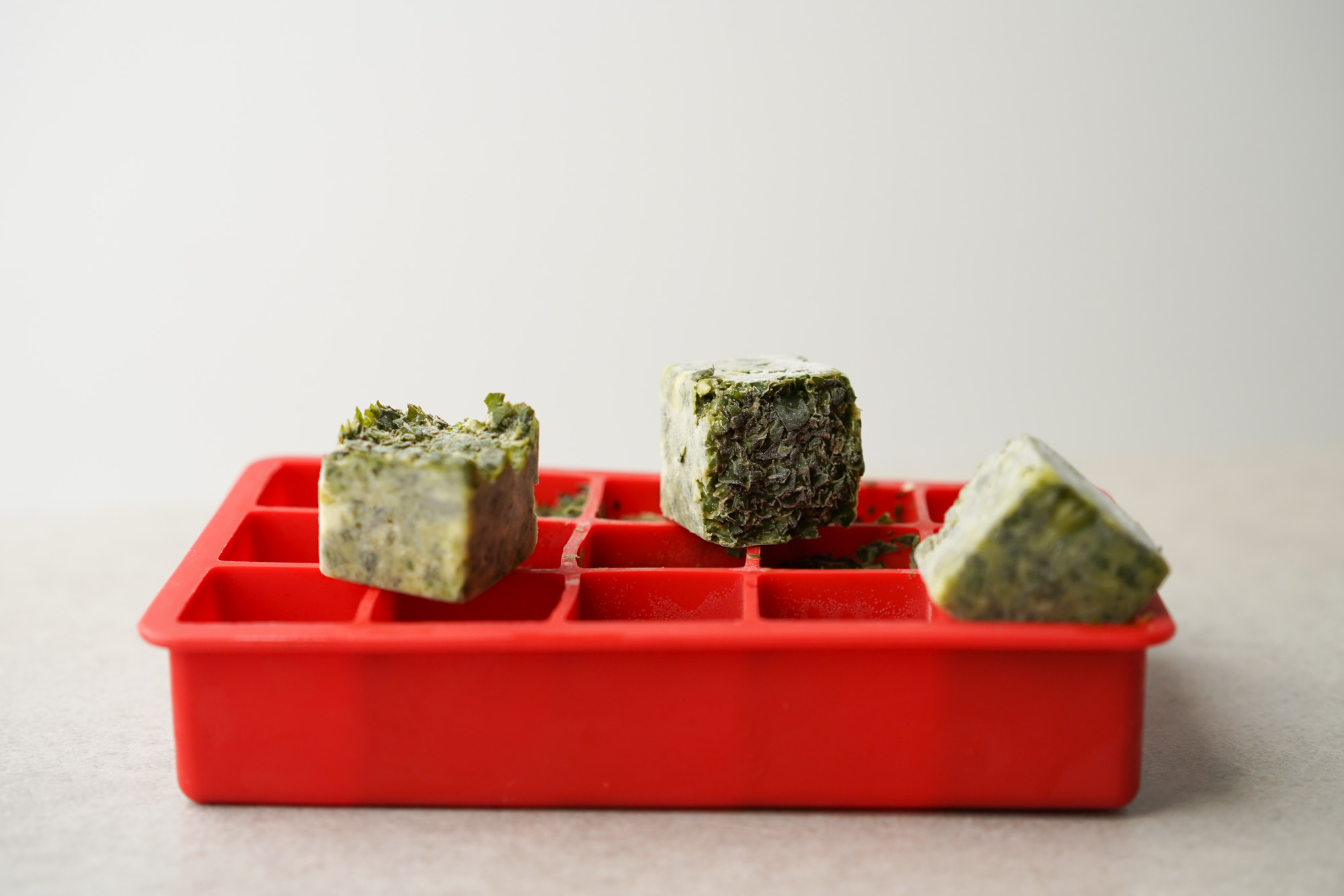Home>Storage Ideas>Bedroom Storage>How To Hand-Wash Clothes To Preserve Your Delicate Pieces


Bedroom Storage
How To Hand-Wash Clothes To Preserve Your Delicate Pieces
Modified: December 7, 2023
Learn how to preserve your delicate clothing by hand-washing them. Follow these tips and keep your bedroom storage looking fresh and beautiful.
(Many of the links in this article redirect to a specific reviewed product. Your purchase of these products through affiliate links helps to generate commission for Storables.com, at no extra cost. Learn more)
Introduction
When it comes to caring for your delicate clothing items, hand-washing is the way to go. Whether you have a collection of elegant silk blouses, delicate lace lingerie, or vintage garments with intricate beading, properly washing them by hand will ensure they retain their beauty and last for years to come.
While throwing them in the washing machine might seem convenient, the agitators and harsh spinning can cause damage to delicate fabrics, leading to tears, fading, or misshaping of the garment. By taking the time to hand-wash your delicate pieces, you can preserve their original color, shape, and quality.
In this guide, we will walk you through the step-by-step process of hand-washing your delicate clothes. From sorting your items to properly drying them, we have you covered. So put on your favorite playlist, grab some gentle detergent, and let’s get started!
Key Takeaways:
- Hand-washing delicate clothes preserves their beauty and longevity. Sort, soak, and wash with care using gentle detergent to maintain the quality of your favorite garments.
- Take your time to hand-wash delicate clothes. Proper sorting, soaking, and gentle washing, followed by thorough rinsing and air drying, will ensure your garments stay in pristine condition for years to come.
Read more: What Does Delicate Mean On A Washer
Materials Needed
Before you begin hand-washing your clothes, it’s essential to gather the necessary materials. Having everything prepared beforehand will make the process smoother and more efficient. Here’s what you’ll need:
- A clean basin or sink: Find a basin or sink that is large enough to accommodate your garments. Make sure it is clean and free of any residue that could potentially transfer to your clothes.
- Gentle detergent: Look for a mild, pH-neutral detergent specifically designed for delicate fabrics. Avoid using harsh detergents, bleach, or fabric softeners, as they can damage or alter the texture of your clothes.
- Cool water: Use cool or lukewarm water for hand-washing your clothes. Hot water can cause shrinking or fading.
- A towel or drying rack: Have a designated area where you can lay your clothes to dry. A clean towel or a drying rack will work perfectly.
- Mesh laundry bags: For extra protection, especially for delicate items like bras or underwear, consider using mesh laundry bags. These will help prevent snags and pilling during the washing process.
- A gentle stain remover (optional): If you have stains on your clothes, have a gentle stain remover on hand. Be sure to test it on a small, inconspicuous area first to ensure it won’t damage the fabric.
Having these materials ready will simplify the hand-washing process and help keep your delicate clothes in pristine condition.
Step 1: Sorting your clothes
Before you begin the hand-washing process, it’s important to sort your clothes based on their color, fabric, and level of dirtiness. This will prevent any color bleeding, fabric damage, or contamination of clean clothes. Here’s how you can efficiently sort your delicate garments:
- Separate by color: Divide your clothes into separate piles based on their colors. Sort them into whites, lights, and darks to avoid any color bleeding during the washing process.
- Group by fabric: Different fabrics require different care. Separate your clothes into piles based on their fabric type. This will help you determine the appropriate washing method and ensure that all your delicate fabrics are handled correctly.
- Consider dirtiness: If you have clothes with heavy stains or dirt, set them aside to pre-treat them before hand-washing. This will help ensure that the stains are properly removed without damaging the garment during the washing process.
- Inspect for loose threads or buttons: Before washing, take a moment to check for any loose threads, hems, or buttons. Repair them if needed to prevent further damage during washing.
By taking the time to sort your clothes, you can prevent any potential mishaps during the hand-washing process and ensure that each garment receives the appropriate care it deserves.
Step 2: Preparing the washing area
Once you’ve sorted your delicate clothes, it’s time to prepare the washing area. Setting up a clean and organized space will make the hand-washing process more efficient. Follow these steps to prepare your washing area:
- Clean the basin or sink: Ensure that your chosen basin or sink is free of any dirt or residue. Give it a thorough cleaning before filling it with water.
- Clear the area: Remove any items around the basin or sink to create a clutter-free workspace. This will prevent any accidents or contamination during the washing process.
- Gather your materials: Have all the materials you’ll need within easy reach. This includes your chosen detergent, cool water, mesh laundry bags (if using), and stain remover (if necessary).
- Place a towel or drying rack nearby: Designate a clean area where you can lay your washed clothes to dry. This could be a clean towel laid flat on a counter or a drying rack placed nearby. Make sure this area is clean and free of any moisture or dirt that could transfer to your clothes.
- Set up a separate area for pre-treating: If you have clothes with stubborn stains, create a separate area nearby where you can pre-treat them using a gentle stain remover. This will allow you to focus on treating specific areas of the garment before proceeding with hand-washing.
By preparing your washing area beforehand, you’ll be able to move through the hand-washing process smoothly and ensure that your delicate clothes are kept clean and well-maintained.
Step 3: Filling the basin with water
Now that you have sorted your clothes and prepared the washing area, it’s time to fill the basin or sink with water. The temperature of the water and the method of filling will depend on the fabric and care instructions of your delicate items. Follow these steps to properly fill the basin:
- Check the care labels: Before filling the basin, read the care labels on your delicate clothes. Some fabrics may require specific water temperature or hand-washing instructions. Follow these instructions to ensure the best results.
- Choose the water temperature: In general, it is recommended to use cool or lukewarm water for hand-washing delicate garments. Hot water can cause shrinking or damage to certain fabrics. Adjust the water temperature accordingly.
- Fill the basin with water: Open the tap or pour water into the basin, allowing it to fill to a level that will adequately submerge your clothes. Fill it enough to ensure proper cleaning but avoid overfilling, as this can lead to splashing or inadequate detergent dispersion.
- Add detergent: Once the basin is filled with water, add the recommended amount of gentle detergent for the load size. Refer to the detergent’s instructions to determine the appropriate amount.
- Gently agitate the water: Use your hands or a spoon to gently stir the water to create a mild detergent solution. Ensure the detergent is well-dissolved and evenly distributed throughout the water.
Remember, it’s important to check the care labels and follow the specific instructions for each garment. By filling the basin with the appropriate temperature water and properly dispersing the detergent, you’ll create an ideal environment for hand-washing your delicate clothes.
Step 4: Choosing the right detergent
Choosing the right detergent is crucial when it comes to hand-washing delicate clothes. Using a gentle and pH-neutral detergent specifically designed for delicate fabrics will help ensure that your garments are cleaned effectively without causing any damage. Follow these guidelines to select the right detergent:
- Look for a mild detergent: Opt for a detergent that is specifically labeled as mild or formulated for delicate fabrics. These detergents are typically free of harsh chemicals, bleach, or enzymes that could potentially damage or weaken the fibers of your clothes.
- Check for pH-neutrality: pH-neutral detergents have a balanced pH level that is gentle on delicate fabrics. They help maintain the integrity and color of the garment without causing any discoloration or fading.
- Avoid additives and fragrances: Steer clear of detergents with added fragrances, optical brighteners, or fabric softeners. These additives can leave a residue on your clothes and may cause irritation to sensitive skin or allergies.
- Consider eco-friendly options: If you’re environmentally conscious, look for detergents that are eco-friendly and biodegradable. These options are gentle on your clothes as well as the planet.
- Read reviews and recommendations: Before purchasing a detergent, read reviews or ask for recommendations from friends or online communities. People’s experiences can provide valuable insights into the performance and compatibility of different detergents with delicate fabrics.
Remember, using the right detergent will help preserve the quality and longevity of your delicate clothes. By opting for a mild and pH-neutral detergent, you can ensure gentle yet effective cleaning.
Use a gentle detergent and lukewarm water to hand-wash delicate clothes. Avoid wringing or twisting the fabric, and instead gently squeeze out excess water before laying flat to dry.
Step 5: Soaking your clothes
After filling the basin with water and adding the appropriate detergent, it’s time to soak your delicate clothes. Soaking helps to loosen dirt, stains, and odors, preparing the garments for gentle cleaning. Follow these steps to properly soak your clothes:
- Place your clothes in the water: Carefully submerge your delicate clothes into the water, ensuring that each garment is fully submerged. Gently swish the clothes around to allow the detergent solution to penetrate the fibers.
- Ensure even soaking: If you have heavily soiled or stained areas, gently massage them with your fingers to help the detergent penetrate and lift the dirt. Pay attention to areas like collars, cuffs, and underarms, which tend to accumulate more dirt and require extra attention.
- Set the soaking time: The soaking time depends on the fabric type and the level of dirtiness of your garments. As a general guideline, let your clothes soak for around 15 to 30 minutes. Delicate fabrics like silk or lace may require shorter soaking times to avoid damage.
- Avoid excessive soaking: While soaking is essential for cleaning your delicate clothes, excessive soaking can lead to color bleeding or damage to certain fabrics. Be mindful of the recommended soaking time, and avoid leaving your garments soaked for extended periods.
- Check for color bleeding: During the soaking process, keep an eye out for any color bleeding. If you notice any colors bleeding into the water, remove the affected garment and rinse it separately to prevent further damage to the other clothes.
Soaking your clothes not only helps to loosen dirt and stains but also allows the detergent to work effectively. By following these steps, you can ensure that your delicate garments are ready for gentle hand-washing.
Step 6: Hand-washing delicate pieces
Now that your clothes have soaked for the appropriate amount of time, it’s time to start hand-washing. Follow these steps to wash your delicate pieces gently and effectively:
- Start with one garment at a time: Remove a single garment from the soaking water, gently squeezing out any excess water. Avoid twisting or wringing the fabric, as this can damage delicate fibers.
- Focus on problem areas: Pay special attention to areas that are prone to dirt or stains, such as collars, cuffs, and underarms. Use your fingers to gently rub the fabric together, focusing on these areas to remove any dirt or grime.
- Gently agitate the water: Submerge the garment back into the water and use your hands to gently agitate the water, creating a gentle washing motion. This will help ensure that the fabric is thoroughly cleansed.
- Avoid scrubbing or harsh movements: Delicate fabrics require gentle handling. Avoid scrubbing or harsh movements that can stretch or damage the fabric. Instead, use a gentle squeezing and rubbing motion to clean the garment.
- Rinse with cool water: After washing, remove the garment from the soapy water and rinse it under cool running water. Continue rinsing until the water runs clear and all traces of detergent are removed.
- Place in a clean towel to remove excess water: After rinsing, gently squeeze out any excess water from the garment. Lay a clean towel flat and place the damp garment on top. Roll the towel and garment together, gently pressing to absorb excess water.
Repeat these steps for each individual delicate garment, ensuring that you give each piece the attention it needs. By hand-washing your delicate clothes with care, you can effectively clean them without causing damage.
Step 7: Gentle rinsing
After hand-washing your delicate clothes, it’s crucial to rinse them thoroughly to remove any remaining detergent. This step helps ensure that your garments are clean, fresh, and free from any residue. Follow these steps to gently rinse your clothes:
- Fill the basin with clean water: Empty the soapy water from the basin and refill it with clean, cool water. Ensure that the water is at a suitable temperature for your delicate fabrics.
- Submerge one garment at a time: Take each hand-washed garment and carefully place it in the basin, ensuring it is fully submerged in the clean water.
- Swish the garment gently: Gently swish the garment in the water to mimic the action of rinsing. This helps to remove any remaining detergent from the fabric.
- Repeat the rinsing process: If needed, repeat the rinsing process with fresh water until the water runs clear and free from any soap suds or residue. This indicates that the garment is thoroughly rinsed.
- Remove excess water: After rinsing, gently squeeze out any excess water from the garment. Avoid wringing or twisting motions that can damage the delicate fibers.
- Place on a clean towel to dry: Lay a clean towel flat and place the rinsed garment on top. Gently roll the towel and garment together, pressing lightly to absorb excess water.
By following these steps, you’ll ensure that your delicate garments are properly rinsed and ready for the drying process. Thorough rinsing helps maintain the quality and freshness of your clothes, leaving them clean and ready to wear.
Step 8: Drying your clothes
Properly drying your delicate clothes is a crucial step in the hand-washing process. By following these guidelines, you can ensure that your garments retain their shape and avoid any potential damage:
- Reshape the garment: After gently removing excess water with a towel, carefully reshape the garment back to its original form. Smooth out any wrinkles or creases and ensure that the fabric lies flat.
- Avoid direct sunlight and heat: Direct sunlight and heat can cause damage and fading to delicate fabrics. Instead, choose a well-ventilated area away from direct sunlight and extreme heat sources to dry your clothes.
- Use a drying rack or flat surface: Place your hand-washed garments on a clean drying rack or lay them flat on a clean towel or mesh surface. Ensure that there is enough space between each garment to allow for proper airflow and drying.
- Flip and rotate: Periodically flip and rotate the garments as they dry. This allows for even drying and prevents any moisture from being trapped in one area for too long.
- Patience is key: Delicate fabrics can take longer to dry compared to regular laundry. Be patient and avoid rushing the drying process by resorting to heat sources like dryers or radiators. Air drying is the gentlest and safest method for delicate clothes.
- Check for moisture: Before storing or wearing your hand-washed clothes, ensure that they are completely dry. Check the fabric by touching it to make sure there is no dampness or moisture left. If any moisture is present, allow the garments to dry further.
- Iron or steam with caution: If desired, you can lightly press or steam your hand-washed garments before wearing. However, always follow the care instructions on the fabric tag and use the appropriate ironing settings for your delicate fabrics.
By following these drying guidelines, you will help maintain the shape, color, and quality of your delicate clothes. Give them the proper time and care to dry naturally, and they will be ready to wear once again.
Conclusion
Caring for your delicate clothes by hand-washing them is a valuable skill that will help preserve their beauty and extend their lifespan. By following the steps outlined in this guide, you can ensure that your delicate pieces receive the gentle treatment they deserve.
From sorting your clothes to selecting the right detergent, each step plays a crucial role in maintaining the quality of your garments. Hand-washing allows you to have control over the cleaning process, ensuring that your delicate fabrics are handled with care.
Remember to take your time, pay attention to the specific care instructions for each fabric, and avoid any harsh motions or excessive soaking. Treat stains promptly, use a mild detergent, and rinse your clothes thoroughly to remove any residue.
Lastly, don’t rush the drying process. Allow your hand-washed clothes to air dry in a well-ventilated area away from direct sunlight or heat sources. Reshape them as needed and check for complete dryness before storing or wearing.
By taking these extra steps to hand-wash your delicate clothes, you can enjoy them for years to come. Not only will they continue to look their best, but you’ll also have the satisfaction of knowing that you’ve taken the utmost care in preserving their beauty.
So, put on some music, gather your materials, and embrace the art of hand-washing to keep your delicate clothes in pristine condition. Your wardrobe will thank you for the extra TLC!
Frequently Asked Questions about How To Hand-Wash Clothes To Preserve Your Delicate Pieces
Was this page helpful?
At Storables.com, we guarantee accurate and reliable information. Our content, validated by Expert Board Contributors, is crafted following stringent Editorial Policies. We're committed to providing you with well-researched, expert-backed insights for all your informational needs.














0 thoughts on “How To Hand-Wash Clothes To Preserve Your Delicate Pieces”